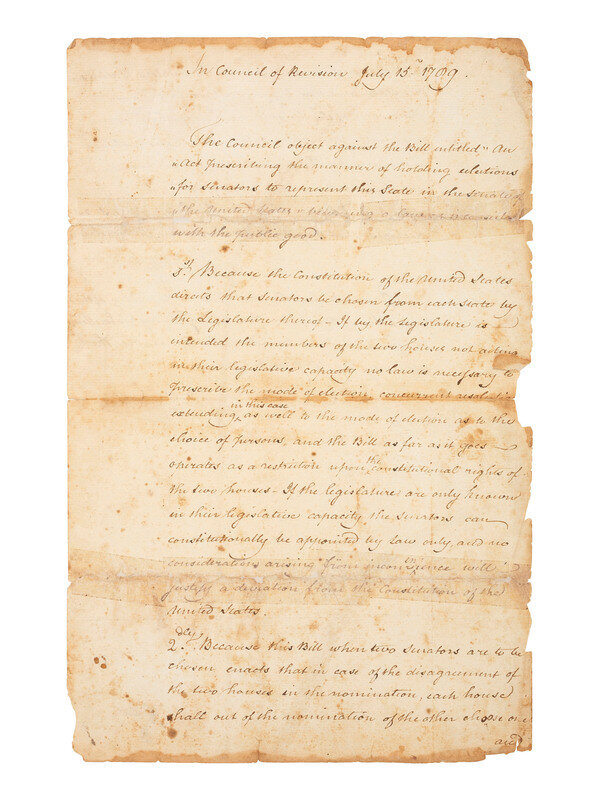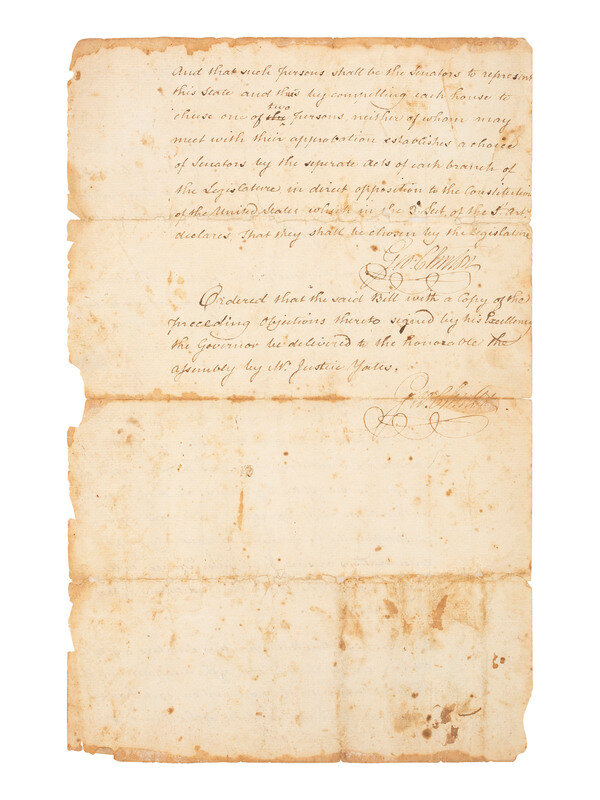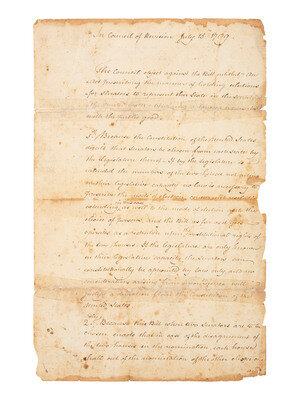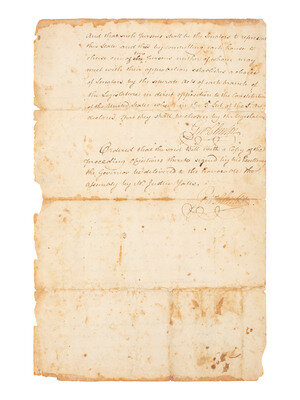Lot 537
CLINTON, George (1739-1812). Council of Revision document twice-signed ("Geo. Clinton"), as Governor of New York, 15 July 1789.
Sale 2057 - American Historical Ephemera and Photography
Oct 25, 2024
10:00AM ET
Live / Cincinnati
Own a similar item?
Estimate
$800 -
1,200
Price Realized
$508
Sold prices are inclusive of Buyer’s Premium
Lot Description
CLINTON, George (1739-1812). Council of Revision document twice-signed ("Geo. Clinton"), as Governor of New York, 15 July 1789.
2pp, 8 1/8 x 12 3/4 in. Laid paper with watermark similar to Gravell, Miller, & Walsh Figure 887.
Council of Revision document with first paragraph: "The Council object against the Bill entitled 'An Act presenting the manner of holding elections' for Senators to represent this State in the Senate of the United States being [?] a law inconsistent with the public good." The remainder of the document elaborates on the two objections of the Council followed by the signature of George Clinton, below which appears Clinton's signed order that the said bill with a copy of the preceding objections are delivered to the honorable assembly by W. Justice Yates.
An Anti-Federalist and Founding Father, George Clinton served as Governor of New York from 1777-1795 and 1801-1804. As governor he was simultaneously a part of the Council of Revision, a legal body formed in 1777 under provisions of the Constitution of the State of New York and which was tasked with revising all new legislation made by the New York State Legislature. The document offered here relates to the July 1789 United States Senate election in New York, the first such election. Prior to the election, however, the New York State Legislature had to establish the proceedings on how to elect the senators. To that end, in February and March 1789, the 12th New York State Legislature debated at length "An act for prescribing the times, places and manner of holding elections for Senators of the United States of America, to be chosen in this State" but they adjourned on March 3, 1789, without having elected U.S. Senators. On June 4, 1789, Governor George Clinton called an extra session of the State Legislature to convene on July 6 at City Hall in Albany, New York. The 13th New York State Legislature convened on July 6, and on July 11 passed "An act directing the manner of electing Senators to represent this State in the Senate of the United States," which required the election to be made by "concurrent vote" of both houses of the Legislature. On July 13, the law was submitted to the Council of Revision. On July 15, the Council objected to the law in two points as identified in this document. Ultimately, on July 16, after the Council of Revision had vetoed the law, State Senator Philip Schuyler and Assemblyman Rufus King were appointed to the U.S. Senate by a joint resolution of both houses of the New York State Legislature.
New York was tremendously influential in the politics of the early republic, and was the battleground of a fiercely competitive political environment. A fascinating document illustrating the process by which a state, and indeed a new nation, determined the electoral process.
Condition Report
Contact Information
Auction Specialist



